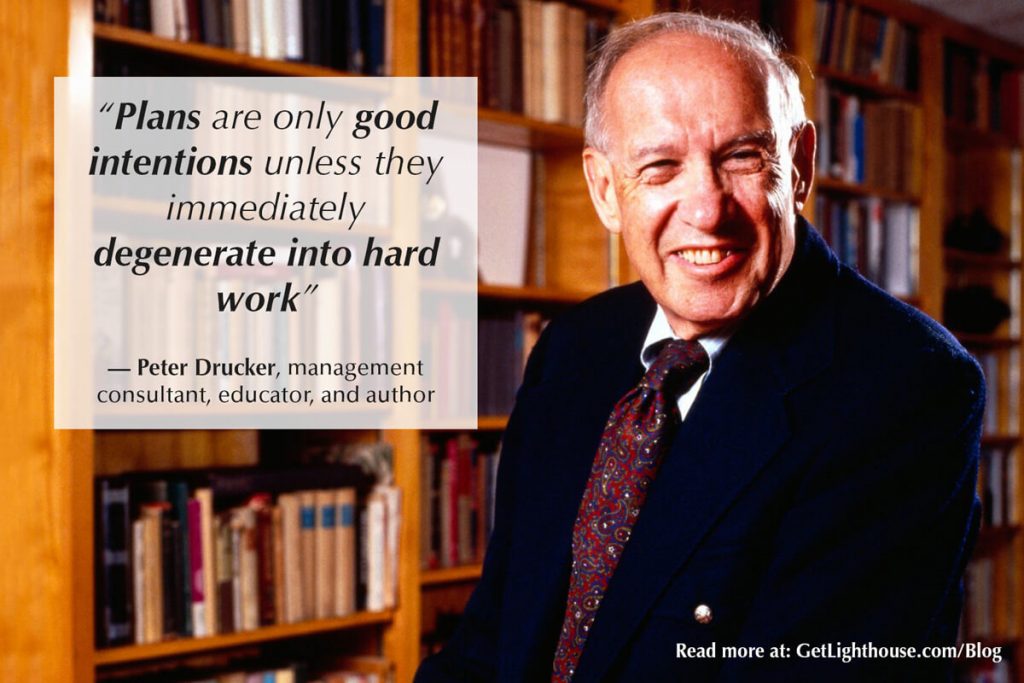Let's talk about something that's probably driving you nuts at work: bad meetings.
You know the ones I mean - where you're sitting there thinking, "This could've been an email", or you're tempted to check out and start answering emails or working on that overdue report.
Unfortunately, these time-wasting meetings cost more than your patience.
When your team is stuck in a bad meeting, they're not working on your key projects, helping customers, nor solving problems. Every minute in an unproductive meeting is a minute we're not moving forward.
The University of North Carolina did a survey of senior managers, and the results are stark:
- 65% said meetings keep them from getting their work done
- 71% said meetings are unproductive and inefficient
- 64% said meetings eat into their time for deep thinking
And UNC isn’t the only one. Atlassian’s workplace study found that:
- Meetings are ineffective 72% of the time
- 54% of people often leave meetings without knowing what to do next
- 62% of people attend meetings that didn't have a clear goal
So what's the real cost of all these poorly run, wasteful meetings? More than you may think. Add it up:
- Your company is paying every attendee to be there
- Important work is slowed or doesn’t get done during that time
- Your team gets frustrated and disengaged
- Decisions get delayed because nothing gets resolved
It’s common for teams like yours to spend hours each week in meetings that aren’t worth the time spent in them. That adds up fast.
Think about it: if a team of 10 people spends just 3 hours a week in unnecessary meetings, that's 30 hours of lost work time. Every. Single. Week.
Want to see how much this might be costing your team?
We've made a simple calculator. Just put in some basic info about your team and meetings, and you'll get an estimate. Fair warning: the number might make you wince.
Ouch! That’s a lot of money to be burning each month. And that’s just one team! Now, think about it across your company…
But here's the thing - now that we know the problem, we can fix it.
Want to tally your team's bad meeting waste? Diagnose your problems with our free Meeting Waste Scorecard.
Sign Up to Get Your Free Meeting Waste Scorecard:
In today’s post, we'll explore how to improve bad meetings to make them truly worthwhile. Because you've got a lot better things to do than sit in another pointless meeting.
Signs of ineffective meetings we will cover
- Signs of a Bad Meeting #1: You don’t have an Agenda
- Signs of a Bad Meeting #2: Lack of Clear Next Steps
- Signs of a Bad Meeting #3: Too Many Tangents
- Signs of a Bad Meeting #4: One Person Is Dominating
- Signs of a Bad Meeting #5: This meeting could have been an email…

Signs of a Bad Meeting #1: You don’t have an Agenda
We've all been there - sitting in a meeting wondering why we're even there. And most commonly, it’s because there is no plan, nor agenda to direct the meeting.
Here's what typically happens without an agenda, which you probably know all too well:
- We waste time figuring out what to discuss
- Important topics get forgotten or missed
- Conversations go off-track with no way to get them back on track
- Nothing gets decided, because discussions drift in many directions
- Whomever is running the meeting struggles to moderate and move things forward
And it’s not surprising then that with all those issues, these meetings also tend to run long; without a firm agenda, it’s hard to have a tight, efficient meeting.
How to solve your lack of agendas problem
Fortunately, there's an obvious fix: create an agenda, if you are interested in conducting effective meetings.
Yet, that’s easier said than done. Here’s a few specific things you’ll need to do to make it work:
- Pick someone to be in charge of each meeting and its agenda. This makes it clear who needs to create it, or who you need to talk to when they fail to.
- Create an agenda for every meeting, no exceptions. Enforcing this is an important step to making it start to consistently happen.
- Encourage sharing it early and ask for input. The sooner an agenda is ready, the sooner people know if they should attend, anything they should prepare, and have ideas for related topics to recommend.
- Keep it visible during the meeting. Nothing makes moderating and staying on task easier than having the agenda right there for everyone to see. Putting in the calendar invite is a great way to do that.
Making this kind of change can have a dramatic impact on both the quality and the length of your meetings. When people come prepared and stay on topic, you can actually get things done and cover more ground than you might expect.
This is an example of a small change that can make a big impact on how you use your time at work. But only once you start having agendas consistently, so make it a habit.

Signs of Bad Meeting #2: Lack of Clear Next Steps
Ever been in a meeting where everyone gets up to leave (or signs off), and you're left thinking, "Wait, what did we actually decide?"
That's a classic sign of a bad meeting. Missing the summary and next steps is like the meeting never happened. It’s also a common reason why yet another meeting is called to cover much of the same material again.
A chain reaction of problems occur when clear next steps don’t come from each meeting:
- People leave confused. They don’t know what’s decided, may end up having different memories of what happened in the meeting, and can feel like the whole meeting was pointless.
- Action items get forgotten, or not done. If next steps aren’t written down, it’s no surprise they’re unlikely to get done. No one likely realizes who is doing what, either.
- You end up rehashing the same stuff in future meetings, because nothing has changed, and people have likely forgotten parts of the last discussion.
- The wrong things may get done by the wrong people. Sometimes taking the initiative can go wrong and when things are unclear that’s exactly what can happen.
- Progress on the project or initiative stalls, because when there is no next step for weeks or months, it fails to move forward in any meaningful way.
As you can see, when you don’t set clear next steps, it can quickly snowball into a variety of problems that can lead to projects ultimately failing in addition to a ton of wasted time.
How to solve your lack of next steps problem
In order to fix this problem, and the cascade of issues that follow from it, you need to take a proactive approach to solving this.
Here’s a few things that can help:
- Save the last 5-10 minutes for next steps. You know how much time this meeting has before it ends, so plan accordingly. End discussions and start talking about next steps with enough time to clearly set them.
- Assign owners of each next step. One of the biggest problems with poor or no next steps is it’s not clear who does what. Make sure as you set next steps, a single person owns each one and it’s much more likely to get done.
- Set deadlines & expectations for each task. As good as it is to have clear owners of tasks, what is expected and by when is just as important so the right things are done and no one is blocked.
- Write it down. All of this becomes much more real and accountable when it’s documented. Write it down. Put it in the appropriate chat channel or email to attendees. This reinforces the who, what, and when of next steps.
- Close the loop next meeting. Just like doing the wrong things can snowball into bigger problems, you build true momentum by checking in on the last meeting’s next steps. That’s how you make every meeting move your project forward.
Consistently adding quality next tapes turns your meetings from time-wasters into productive sessions. Your team will leave knowing exactly what they need to do, and you'll see real progress on the project. .
Remember, a good meeting doesn't just share info - it leads to action. By wrapping up properly, you're setting everyone up for success.

Signs of a Bad Meeting #3: Too Many Tangents
Another common issue is when your meetings go off the rails. You know the ones - you start talking about the budget, and suddenly someone's sharing their weekend plans. And even if off topics are about work, they drift from the core topic to another project.
These tangents are real time-wasters and leave everyone frustrated. Not only is it eating into precious time, but if often takes time to get back on track.
Here’s how these tangents often go:
- An attendee brings up a tangential or unrelated topic
- The tangent eats up a chunk of your scheduled meeting time
- It takes awhile to rein in the conversation and get back on track (if it ever happens)
- People the tangent doesn’t relate to start checking out of the meeting, either working on other things, or leaving entirely
- Momentum is lost, and the meeting accomplishes only a fraction of what it could have
Tangents are an insidious problem for meetings, because they can show up at any time, in any meeting. Even if you have a great agenda, it’s easy for someone to bring up another topic and a few other attendees to jump in to talk about it.
That’s why it’s so important to build a culture where tangents rarely happen, and if they do, you get back on track quickly.
How to solve your meeting tangents problem
Tangents can either be a quick problem to be solved, or a frustrating, eye-rolling scenario that leaves you and your team thinking, “here we go again…”
Here’s how you can keep your meetings on task and focused on the right things:
- Make a detailed agenda that’s shared ahead of time. This is the foundation of avoiding tangents, because it’s what you can reference as desired topics.
- Politely cut off tangents and get back to your agenda. When tangents inevitably happen, calmly interrupt and mention that this is outside the scope of the meeting. Redirect the conversation back to where you were on the agenda.
- Recommend a better place to discuss the tangent. Many tangents have a positive purpose, just not in your meeting. Suggesting how and where people can take it offline (like another meeting it fits, or a chat group after) helps the tangent maker feel heard.
Remember, a focused meeting is a successful meeting. Being polite, yet firm in redirecting conversations is the best way to handle tangents.
This can sound scary, so I’d like to share a story to make this more tangible:
At a previous company I held product meetings with the executive team every 2 weeks. I always made sure there was a tight agenda and I was prepared to go over any anticipated questions.
We also had a CEO who tended to jump into random topics all over. He was the king of tangents.
To keep his tangents from preventing the other executives from getting the updates they needed, I would frequently redirect his tangents with comments like, “That’s a great idea. Let’s talk about that in our check in later this week. Right now I want to be sure we have time to get to [remaining agenda items.]”
Because I suggested a clear time our CEO would still be heard, and reminded him the other things he knew we needed to cover here, it worked most of the time to quickly get us back on track.
While it requires some finesse and politeness to stop tangents from eating up your meetings, developing this skill and practicing it effectively is a key way to reduce the number of bad meetings you have.

Signs of a Bad Meeting #4: One Person Is Dominating
They've got an opinion on everything and aren't shy about sharing it. An executive has strong views and loves getting up on their soapbox to tell stories.
Whoever the dominant speaker is, you know how painful it can be when they take over yet another meeting.
It can be a huge problem when you lose all that time in your meetings. It gets even worse when you and your team are torn on inviting them; it they’re sometimes helpful and constructive, or they carry a lot of influence and decision making power, it can feel like all you can do is grin and bear it.
Here’s everything that goes wrong when you have one person dominating discussions:
- You miss out on different views and ideas. This isn't just about fairness - diverse perspectives often lead to better solutions. When only one voice is heard, you're limiting your team's problem-solving ability.
- Quiet folks feel like they don't matter. You shouldn’t have to be bold and loud to have your ideas heard. Yet, especially your introverts or newer team members might have great ideas but never feel they have the chance to share them.
- Important context & ideas are missed. When others can’t get a word in, you miss out on critical feedback and ideas that can avert problems, improve ideas, and bring better outcomes.
- People tune out and stop paying attention. When it happens too often, people start checking out as soon as the dominator starts talking. Whether they leave the meeting, start chatting or emailing others, or do other work, they’re no longer focused on the meeting.
Once again, this is the kind of problem that can start small and innocent, but then eventually snowball into a very destructive, ongoing problem.
That’s why it’s important to take this issue head on.
How to solve your meeting domination problem
If you have a meeting dominator who you know is going to keep attending, and derailing your meetings, don’t lose hope. There are a few things you can do that can greatly minimize the damage they do in your meetings.
Here’s a few approaches you can plan to use the next time a dominator is in a meeting of yours:
- Have a "no interruptions" rule. It’s easy to make the case that this is simply good manners, and helps ensure the dominator doesn’t take over until it’s their turn.
- Call on quieter team members first. If you’re running the meeting, you can pick who you go to first. Configure your agenda and plan ahead based on attendees so other team members go before the dominator gets their turn.
- Time box your discussions. If the dominator is starting to eat into time for other topics, use that as a way to cut their rant short and politely redirect the discussion to other topics, much like we discussed tangents last section.
- Use breakout groups in big meetings. When you break into smaller groups the dominator can only take over one of the groups, so it creates more opportunities for others to contribute without interference.
- Talk privately with them after the meeting. Some people don’t realize what they’re doing. Having a private, honest discussion can often make them more receptive to when you need to cut them short, and understand why it’s a problem.
By creating a space where everyone feels comfortable speaking up, you'll tap into your team's full potential. You'll get better ideas, more support for decisions, and a more engaged team overall.
Plus, you might uncover some hidden talents or perspectives you didn't even know existed on your team.
Remember, a great meeting isn't just about passing along info - it's about real teamwork and collaboration. It might take some practice, patience, and difficult conversations with the dominating attendee. However, with conscious effort you can minimize their negative impact, while still getting some of the valuable input and ideas that made you invite them in the first place.

Signs of a Bad Meeting #5: This meeting could have been an email…
You probably feel this way on a semi-regular basis, “ugh, this meeting could have totally been an email…”
There’s nothing quite like sitting through a meeting both frustrated by the lack of value in the meeting and considering all the other things you could be doing instead.
That’s why it’s important you never call meetings that could be emails, and do your best to avoid attending them, too. Unfortunately, these kinds of meetings can lead to all kinds of problems and bad habits:
- Interrupted workflow and focus. Every meeting you have breaks up you and every attendee’s work day a little bit more. This especially hurts anyone who needs to do deep, focused work. Studies show it can take up to 23 minutes to fully refocus after an interruption. Multiply that by several unnecessary meetings a week, and you're looking at a serious hit to productivity.
- More meeting fatigue. When meetings become too frequent, people start to dread them. That calendar invite becomes a source of stress rather than an opportunity for collaboration. This can lead to disengagement and even resentment over time, because no one likes endless, pointless meetings filling their day.
- Wasting collective time. If you're pulling 10 people into a 30-minute meeting that could've been an email, that's 5 hours of collective work time gone. Over a year, that adds up to weeks of lost productivity.
- Encouraging bad meeting habits. Just like when dominators start talking, meetings that should have been an email encourage people to start doing other work in the middle of the meeting. This causes meetings to drag on even longer, and starts to build a culture where people do that in all kinds of meetings.
Like many of the other problems we’ve discussed today, this is the kind of bad meeting problem that can seem innocent at first and then grow into something much more damaging.
One bad meeting that could have been an email isn’t so bad, but when they start happening consistently, a lot of bad habits and repeated interruptions can happen.
How to solve your “could have been an email” problem
To keep your people focused on being active participants in meetings, you need to maintain a high quality bar for those meetings. Fixing this problem is a key part to ensuring that happens.
Here’s how you can fix these types of meetings:
- Be honest in evaluating meetings. When you create a meeting, make sure there’s a good reason that everyone needs to be available at the same time to talk about it. Basic status checks and updates are often much better to share in a document or email, saving decisions and active debate for meetings.
- Check with others if their meeting could be an email. While respecting seniority and the hierarchy of your organization, it can be helpful to politely check in on some meetings regarding if they can be an email update. Even if you can’t get them to switch, sometimes you can skip attending and request a written update afterwards instead. This can be a great way to protect you and your team’s time.
- Enforce the requirement for agendas. When someone has to make an agenda ahead of time, it makes it much easier for everyone to judge if they need to be there. It also can help you recognize if the meeting is a candidate for suggesting it’s simply an email update.
- Experiment with and embrace tools to help you. Advancements over the last 5 years have made updating in various formats a lot easier, whether you use a chat app like Slack or MS Teams to have a discussion, share a Google doc, or make a Loom video teams can comment on. These tools can help make it easier and more obvious what doesn’t need to be a meeting.
By being more selective about when you and your colleagues call meetings, you're showing respect for your team's time and work. You'll free up more time for them to do the deep work they love, and when you do meet, it'll be for things that truly require real-time discussion.
That’s how you get your team to be fully present for the meetings you do hold.
Remember, good leadership isn't about constant face time - it's about enabling your team to do their best work. Sometimes that means knowing when not to meet.
Final word
Bad meetings are the bane of the existence of so many workers at all levels. No one likes the interruption to their day, nor the feeling they can’t get anything done.
Yet, all too often the only reason your work life is like that is because you’ve picked up some bad meeting habits. That’s why it’s important to give an honest look at all of your meetings and consider how you can improve some and eliminate others.
Today, we’ve covered 5 common signs of bad meetings that can appear in any team, but there is still much more to learn.
If you want to keep improving your meetings, and better diagnose your biggest problems you need to fix, then sign up to get our FREE Meeting Waste Scorecard.
This simple PDF will help you understand which issues you have and put you on a path towards fixing them, so that the word “meeting” doesn’t have to be a dirty word with your team.
Sign Up to Get Your Free Meeting Waste Scorecard:




